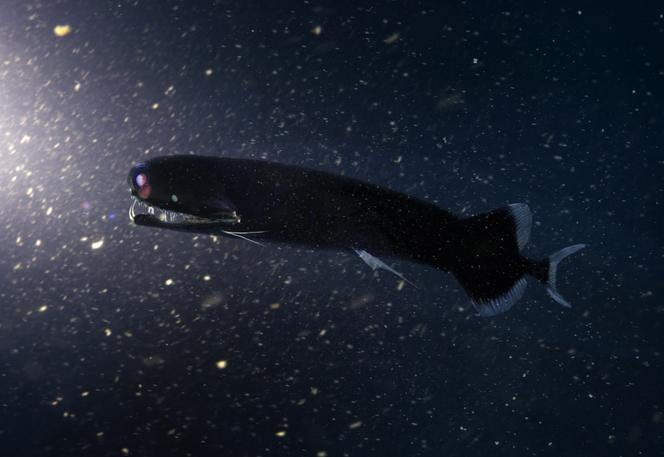


Usually, dragon fish make headlines for their hunting skills. Lurking at the bottom of the abyss, concealed by their near-perfect black scales, these 15- to 40-centimeter-long predators use their wide mouths and particularly sharp teeth to munch just about anything that comes their way. However, these creatures are hiding another peculiarity, this time in the amorous conquest department. Males have larger eye sockets than females – an exception among vertebrates.
A team from Boston College announced the discovery on Tuesday, July 23, in the journal Biology Letters. It is the culmination of 20 years' research on bioluminescent systems by Christopher Kenaley and his colleagues. While dragon fish know how to hide, they also need to be seen. Indeed, the scarcity of food at these depths of 1,000 to 3,000 meters means that individuals are scarce. When it's time to reproduce, they need to find each other.
To do this, dragon fish have photophores that emit light. The largest, about a centimeter in size, are located on the head, close to the eye, where they produce a blue-green light. Previous work had already shown that males benefited from larger photophores. "This is undoubtedly a way of distinguishing the two sexes, which is essential given how difficult it is for them to find a mate," Kenaley added.
As a result, while a female can see a male from 75 meters away, he has to wait until he's 30 meters away to spot her. Such a gap may seem insignificant. But it can lead females to expend a disproportionate amount of energy in approaching males – energy they'll need in the future.
The researchers therefore set out to determine how evolution could have closed this "detection gap." They studied 105 specimens of two dragon fish species (Malacosteus niger and Photostomias guernei) from the collections of Harvard University. Unable to accurately measure the eyeball, which deteriorates over time, they examined the crystalline lenses – particularly resistant lenses measuring around 1 millimeter in diameter. There, they found a difference in diameter between males and females of around 5%. "Such a difference may seem minor," said the researcher. "But it allows the eye to receive many more photons. We were all the more surprised because observations of sexual dimorphism in eye size are extremely rare. Chickens, a few snakes and a rockfish from the American West Coast. As far as I know, that's it."
The scientists then carried out some modeling. The result is that the male gains up to 5 meters of visibility. Again, this may not sound like much. But for the dragon fish, it means a lot, as potential mates are rare. It's likely, moreover, that the male doesn't rely on his visual abilities alone to find his soul mate. A study conducted on lanternfish – also luminescent – has shown the power of smell in this other deep-sea species and the importance of olfactory cues for their reproduction.
You have 10.87% of this article left to read. The rest is for subscribers only.
